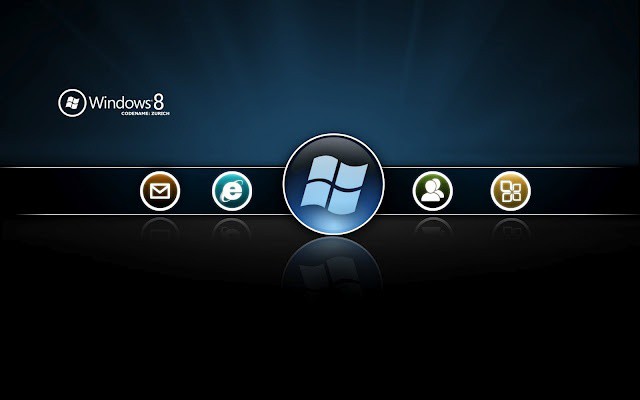Yesterday, Microsoft announced its Windows 8 product lineup. The lineup includes just three editions as opposed to Windows 7 and Vista, which offered twice as many options though some were targeted at developing and niche markets. In addition to streamlining the overall offerings, Microsoft also drew a sharper line between Windows 8 for desktop, notebook, and tablet PCs with x86/64 processors and Windows for ARM-based tablets.
If the dividing line between a full-fledged version of Windows and a version designed for low cost tablets seems vaguely familiar to you, it’s because the strategy is pretty similar to the distinction between Apple’s OS X for Macs and iOS for iPhones, iPads, and iPod touches.
In fact, the entire desktop and mobile lineup that Microsoft is developing seems to borrow pretty heavily from Apple’s playbook.
Windows 8 for x86/64 will ship in two versions – Windows 8 and Windows 8 Pro. The distinctions harken back to the variations in Windows XP (the longest and best-selling version of Windows). Both will offer the same basic features, but Windows 8 Pro will include business oriented features like Windows domain login/access, virtualization tools, and encryption.
Windows 8 for ARM tablets, which has been renamed as Windows RT, will be available only on tablet devices. Microsoft will be taking a heavy hand in the physical look and feel of those tablets – more so than the company is known for doing when it comes to Windows. These tablets won’t support any legacy Windows apps – just Metro apps from the new Windows Store. They also won’t support traditional management technologies.
Windows RT actually seems to have much more in common with Windows Phone than it does with Windows 7 and earlier or even Windows 8 for x86/64.
The similarities to the launch and evolution of iOS seem incredibly obvious. Microsoft developed a new touch-oriented mobile OS that it launched on a smartphone. The company then extended that interface and development tools to an OS with a wider range of devices including a low-cost consumer-oriented tablet. At the same time, Microsoft is bring those interface elements into its desktop OS.
The timeline differs from Apple’s evolution of iOS and OS X, but the overall events are pretty similar. And the overall strategy of building an ecosystem is very similar as well. Perhaps the biggest difference is that Apple feels free to jettison outdated features rather than strive for generations of backwards compatibility.
The big question is whether Microsoft will see the kind of success as Apple. So far, Windows Phone hasn’t had much market penetration after a year and a half on the market. European carriers have even condemned the new Lumia Windows Phone handsets as being unable to compete.
And in the case of Windows RT, Microsoft seems to be making one of the big mistakes that RIM made with its PlayBook tablet – positioning it as a consumer product in direct competition with Apple’s iPad while abandoning one of its core business and enterprise customers. One of Windows RT’s big red flags for IT is that it doesn’t support Windows domain logins and Active Directory group policies. Another is the lack support for legacy apps. While you can argue that the iPad has similar limitations, it is a proven platform with 200,000+ apps – and many enterprises already have iOS management solutions in place.


